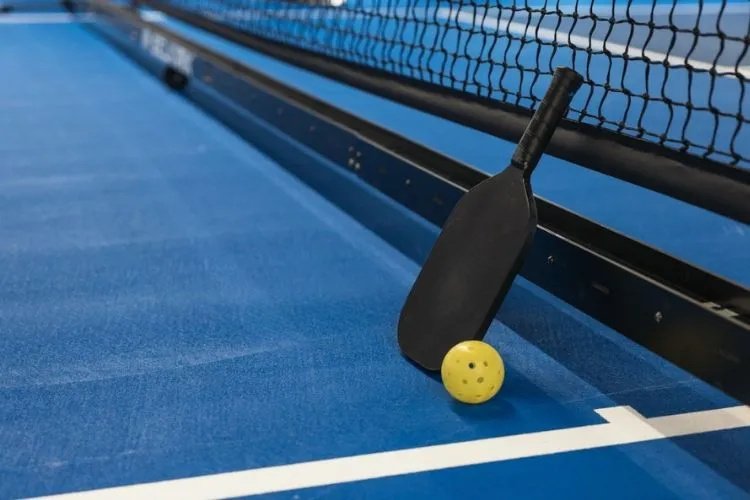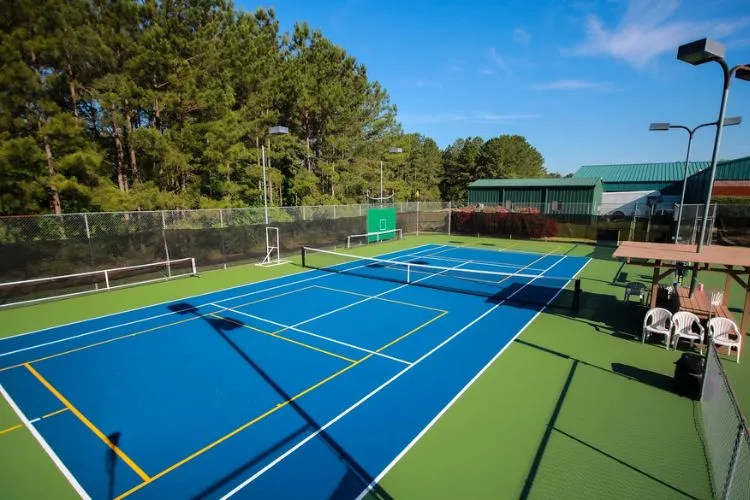Pickleball, a sport that merges elements from tennis, badminton, and table tennis, has seen a meteoric rise in popularity over the past few years. Central to the game is its unique equipment, particularly the pickleball itself.
The specifications of this equipment play a critical role in how the game is played, with the diameter of the pickleball being a key factor. So, what is the diameter of the pickleball?
This article delves into the significance of the pickleball’s diameter, its impact on gameplay, and the standards set by governing bodies.

What Is The Diameter Of The Pickleball?
The official diameter of a pickleball is strictly defined, ranging from 2.874 to 2.972 inches (73 to 75.5 millimeters), with a weight between 0.78 to 0.935 ounces (22.1 to 26.5 grams).
These specifications ensure a level of consistency in play, whether in casual games or competitive matches. Additionally, pickleballs come in various colors, with the choice often depending on the playing environment to maximize visibility.
Understanding Pickleball
Originating in the mid-1960s on Bainbridge Island, Washington, pickleball was created as a family pastime that quickly evolved into a full-fledged sport. It is played on a court similar to that of badminton, with a net resembling tennis but lower.
The game uses paddles, which are larger than table tennis paddles but smaller than tennis rackets, and a unique ball with holes.
Importance of Diameter in Gameplay
The diameter of the pickleball significantly influences its flight characteristics, bounce, and the control players have over their shots. A ball within the specified diameter range ensures a predictable and fair play.

Compared to balls used in other sports, the pickleball’s unique size and weight contribute to its distinctive play style, requiring players to adapt their strategies and techniques.
Manufacturing Standards
Organizations such as the USA Pickleball Association (USAPA) and the International Federation of Pickleball (IFP) set the standards for pickleball equipment.
These standards are crucial for maintaining the integrity of the sport, especially in tournament play, where equipment compliance is strictly enforced to ensure fairness and consistency.
Choosing the Right Pickleball
Selecting the right pickleball can depend on various factors, including the player’s skill level, whether the game is played indoors or outdoors, and personal preference.
For beginners, a softer ball might be recommended for easier control, while advanced players might prefer a harder ball for more precise shots.
The playing environment also influences the choice; outdoor balls are typically designed to withstand wind conditions and have a slightly different construction to handle the elements.
Pro Tips
To extend the lifespan of pickleballs, regular maintenance is crucial. This includes cleaning the balls after use and storing them in a temperature-controlled environment to prevent warping.
It’s also important to inspect pickleballs regularly for signs of wear, such as cracks or significant color fading, and replace them as needed.

Players should be aware that temperature and playing surfaces can affect a ball’s performance; colder temperatures can make the plastic harder and less responsive, while rough surfaces can wear down the ball more quickly.
You may also read: Graphite vs Composite Pickleball Paddles
Frequently Asked Questions (FAQs)
Why do pickleballs have holes?
The holes in a pickleball reduce wind resistance and allow for greater control over the ball’s flight path, making the game more strategic and enjoyable.
Can the diameter of a pickleball affect its bounce?
Yes, the diameter and the material composition of the pickleball influence its bounce characteristics. A ball within the official size range ensures a consistent and predictable bounce.
How often should pickleballs be replaced?
Pickleballs should be replaced when they show signs of wear, such as cracks, significant fading, or if they no longer maintain their original bounce and flight characteristics.
Are all pickleballs the same size, regardless of brand?
Yes, to comply with official regulations, all pickleballs must fall within the specified diameter and weight range, regardless of the brand.
What is the difference between indoor and outdoor pickleballs?
Outdoor pickleballs are typically designed to be slightly heavier and harder to withstand wind and rough playing surfaces, while indoor balls are softer and have a slightly different bounce characteristic to suit indoor courts.
Conclusion:
The diameter of the pickleball is more than just a measurement; it’s a fundamental aspect that influences the dynamics of the game. Understanding the specifications and choosing the right ball can greatly enhance a player’s performance and enjoyment of pickleball.
As the sport continues to grow, the adherence to these standards ensures that the game remains fair, competitive, and fun for everyone involved.

Pickleball’s more than a game to me—it’s a passion. I write, sharing its highs and lows, the thrills and the lessons. Some tales might draw you to the court, while others give a hint of the game’s magic. So, curious about my journey? Ready to dive deep into the world of pickleball with me? Let’s go.
